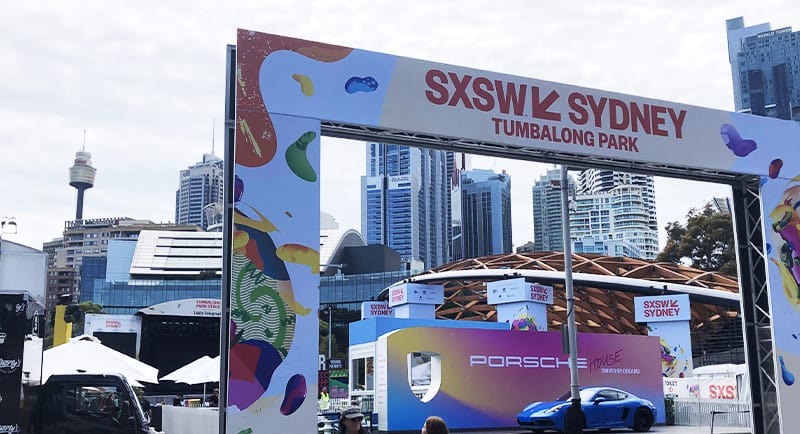Mediaweek is on the ground at SXSW Sydney, with coverage brought to readers, listeners and viewers by Ryvalmedia and News Shorts.
Here’s what happened on Friday, October 20.
Dodo De-Extinction And Other Lost Animals
By Tess Connery
One of the more left-of-centre sessions of the conference, Dodo De-Extinction And Other Lost Animals took a look at the science of bringing extinct animals back from the dead.
Wildlife scientist, Dr Vanessa Pirotta hosted a panel with Ben Lamm, CEO of Colossal Biosciences, and Professor Andrew Pask, leader of the Thylacine Integrated Genetic Restoration Research (TIGRR) Lab at the University of Melbourne.
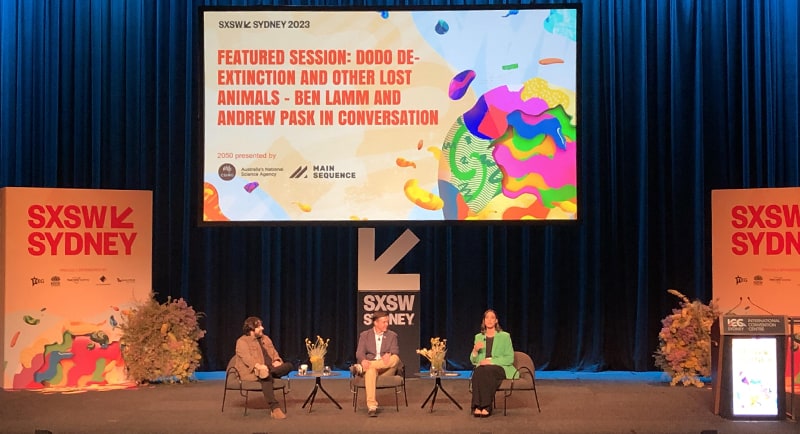
The trio dove into the work that could see live Tasmanian Tiger cubs born by 2028, in a process Pask called a “reverse Jurassic Park”. Instead of taking a string of Dinosaur DNA and filling in the gaps with frog DNA like in the films, their work involves taking the DNA of the Tiger’s closest living relative – the fat-tailed dunnart – and slotting in Tiger DNA where appropriate.
The sessions also discussed how mammoths are more closely related to Asian Elephants than Asian Elephants are to African Elephants, and what the ethics would be of bringing back Neanderthals.
What AI-Generated News Could Mean For Human-Produced Journalism
By Jasper Baumann
Rounding out the week was a panel discussion on the question of whether society is standing on the precipice of a journalism revolution. Will AI-generated news be seen as trustworthy or will the problem of AI-generated misinformation place a new premium on human-generated news?
It’s a topic that was all over SXSW Sydney, but it’s an important topic for working journalists who pride themselves on original reporting and sourcing out raw facts to build stories.
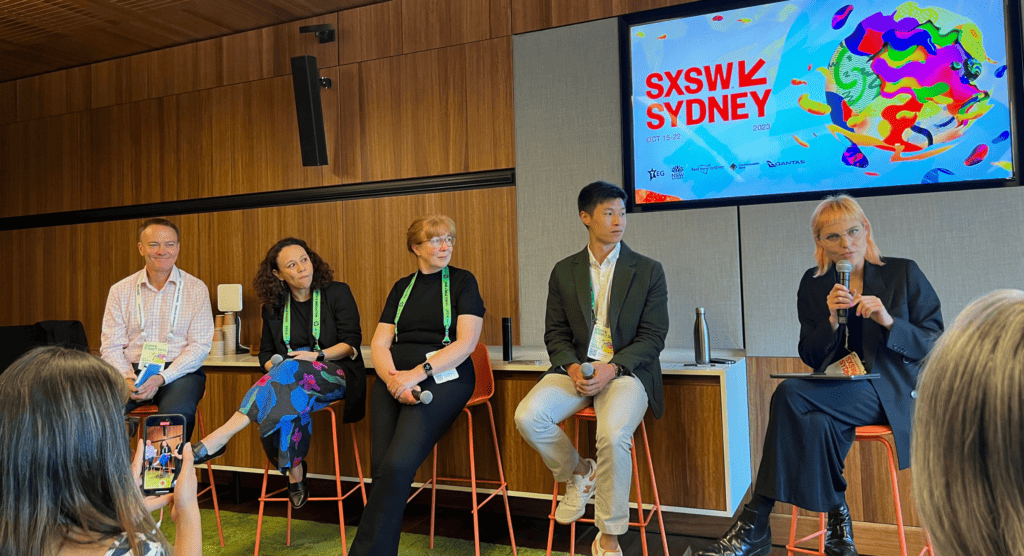
The ABC was represented at the panel by moderator Ange Lavoipierre and head of news distribution & strategy, Stuart Watt who shared insight into how a legacy media company might adapt to emerging AI technologies, ultimately stating that the ABC itself most likely will not adopt generative AI to write news stories.
The panel also featured Fran Molloy and Pete Huang who were asked to explain in one sentence what their outlook on the future of AI looks like in the context of journalism.
“I am an optimist, although I recognise the pessimistic future for some jobs in journalism,” said Molloy.
“I’m a hyper-optimist,” Huang said.
Rewriting the rules of sports marketing
By Alisha Buaya
Joe Weston, global head of sports at We Are Social, led a robust discussion that explored the new challenges facing the sports industry and how marketing plays a part in reshaping its future for the new generation.
Weston moderated the discussion with Chloe Dalton, Olympic Gold Medallist, AFLW Player and Founder of The Female Athlete Project; Dianne Everett, general manager of brand, sponsorship and social at Commonwealth Bank; and Kim McConnie, marketing director at Kayo Sports.
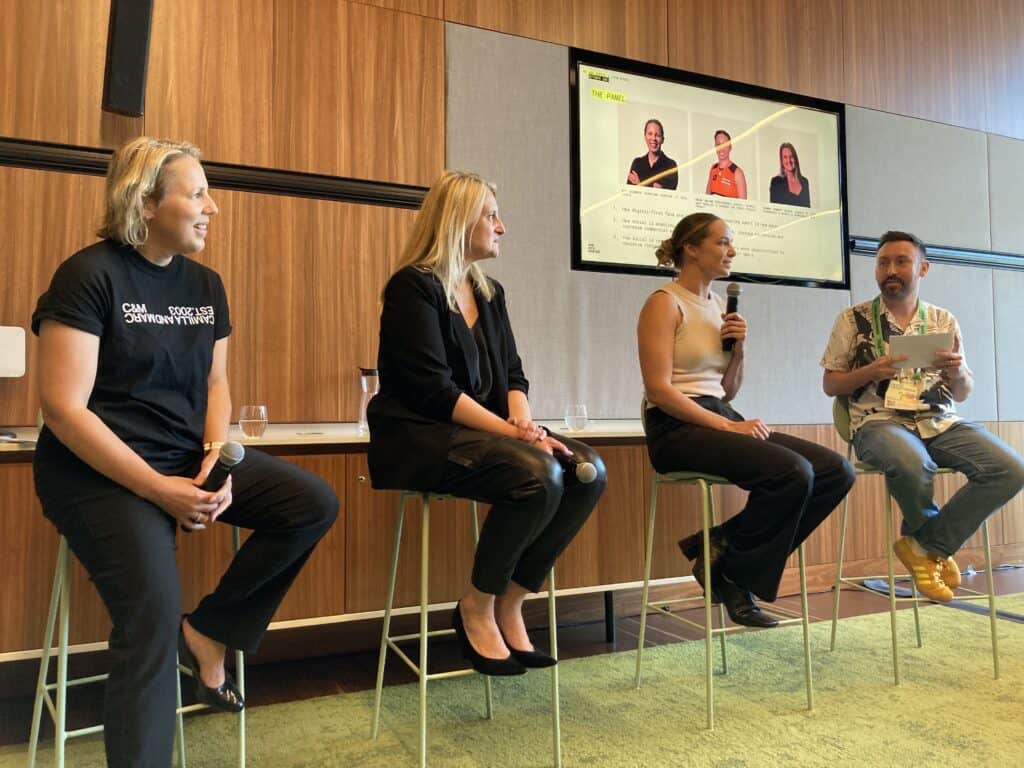
Kim McConnie, Dianne Everett, Chloe Dalton and moderator Joe Weston
The panel discussed Gen Z’s waning interest in sports, platform viewing proliferation and increased competition for fandom from global sports like Basketball, F1 and cricket. The experts also talked about why brands need to understand the new rules for how to cut through and engage the next generation of fans.
McConnie was asked about finding the balance between what content is given away when it comes to social publishing and what shows up to generate interest off Kayo versus what is put behind the platform.
McConnie compared it to dating and explained: “What we put in on social and free, it’s like, I want you to see the best amount I mean, I’m really witty, I’m going to smile across the room, you get a little taste of me and understand a bit more. Then we start to go, okay, now we’re getting a bit serious, and I’ll let you have dinner, maybe we might move in together. Then you get full access Kayo.”
“We see it as like a connected journey this way, how do we tease you and catch your eye right way through, we’ve got the cat, the dog, the kids, and now we’re always together.”
Creating Mass Cultural Moments
By Tess Connery
Remember where you were when Cortnee Vine took the penalty-winning goal during the FIFA Women’s World Cup 2023? And do you remember how it made you feel?
At Seven House, 7News Spotlight’s Sarah Greenhalgh led a panel with Michelle Klein (chief customer and marketing officer, IAG), Melissa Hopkins (chief marketing and audience officer, Seven), and Chris Brown (SVP and chief customer officer, McDonald’s) to discuss the impact of these major moments on brands and audiences.
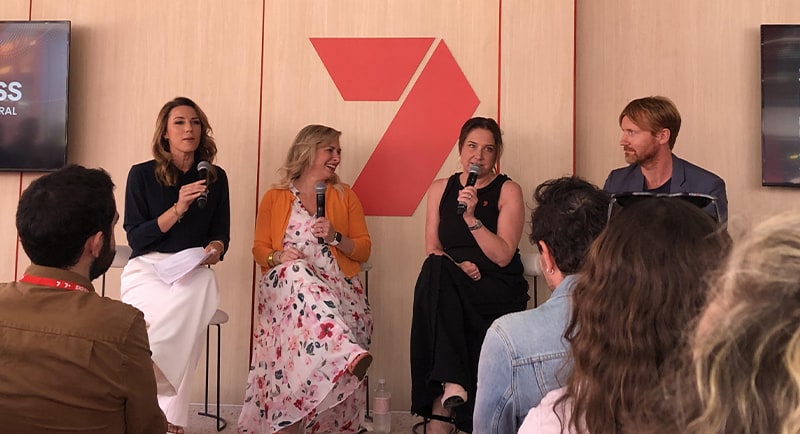
“A mass cultural moment is when you end up pulling either a nation together, people become so emotionally invested in an event or environment,” said Hopkins. “But mass cultural experiences also can be smaller, because it’s based on the individual. A mass cultural experience can also be the Lane Cove cricket team winning a season. It’s really about where people connect.”
Frisson: Why Music Gives You Chills
By Jasper Baumann
This panel featured Grammy award-winning producer Eric J Dubowsky, music psychologist Dr Solange Glasser, Sonos director of marketing for global growth markets, Emma Levy and Tim Baggott, ECD at Amplify.
The session explored the psychophysiological phenomenon of frisson and uncovered how Eric J combined art, science, and Sonos spatial audio innovation to create a unique, immersive audio experience.
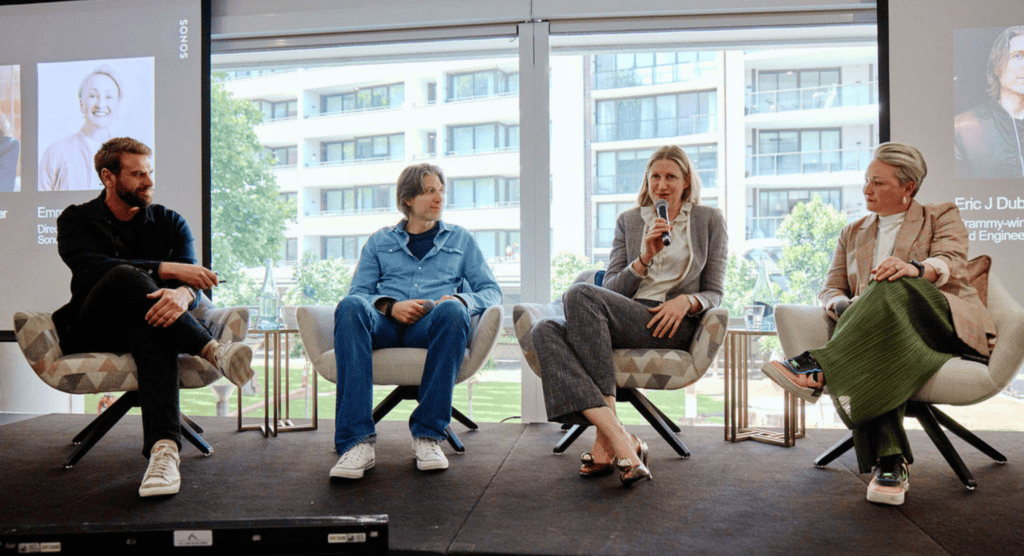
Frisson is known as an emotional response to music that can evoke physical sensations such as shivers, goosebumps, and dilated pupils. Research has found that specific musical compositions and arrangements can trigger frisson.
Sonos also worked with Amplify to explore how and why frisson occurs, collaborating with Eric J to create the song “Frisson Trigger.”
What Artists Can Learn From Tech & What Tech Can Learn From Artists
By Tess Connery
After a pumping set from Barkaa in The Courtyard presented by Rolling Stone, punters took a seat for What Artists Can Learn From Tech & What Tech Can Learn From Artists.
Moderated by Luke Girgis (CEO of The Brag Media, Variety, and Rolling Stone Australia), the Twilio panel was made up of Liz Adeniji (regional vice president at Segment), Jaddan Comerford (CEO and founder of UNIFIED Music Group), and Wayne Baskin( co-founder and CTO of Superhero).
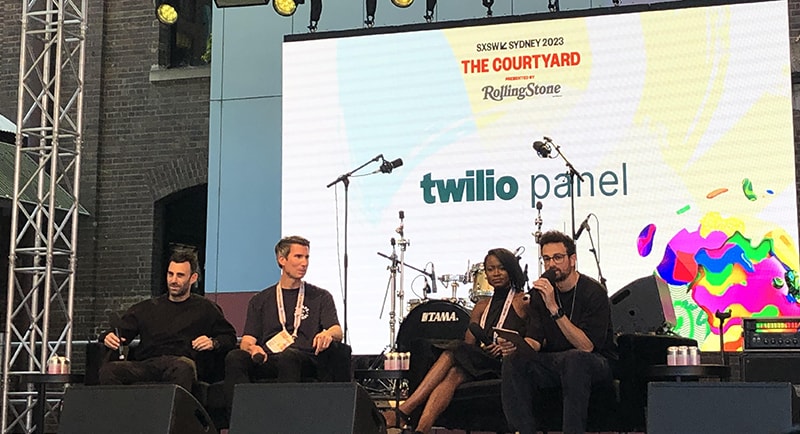
One of the key themes of the panel was the relationships that brands – be that brand Twilio or Beyonce – are doing to connect with their customers. The key to communicating well with consumers? Data.
“How does the customer want to be spoken to?”, asked Baskin.
“What do they want to see, what are they interested in? But also where do they want to be spoken to? Do they want SMS? Do they want a push notification? Do they want an email, so they want newsletters? It all sounds easy, and when I meet you here, I can talk to you one on one and I get to know you – but it’s all about the data we have. It’s all about capturing that data, putting that data into the right systems and allowing the systems to help us.”
Is doing good actually doing any good?
By Alisha Buaya
Catherine King, chief strategy officer at Leo Burnett, moderated an insightful and interesting panel on whether making the effort to do good for a company’s brand – social, environmental and in its governance – actually does good for them internally and externally.
The session teetered a delicate balance between social responsibility, positive change and woke capitalism.
The debate surrounding the boundaries of positive impact versus the unfair meddling in issues of public interest has intensified, particularly as more voices and brands opportunistically look to attract attention from doing good.
Joining King on the panel was Carl Rhodes, dean and professor of organisation Studies at the University of Technology Sydney Business School, Emily Millane, impact economics lead, economic security and governance, and Skye Lambley, chief executive officer of Herd MSL and Salterbaxter Australia & New Zealand.
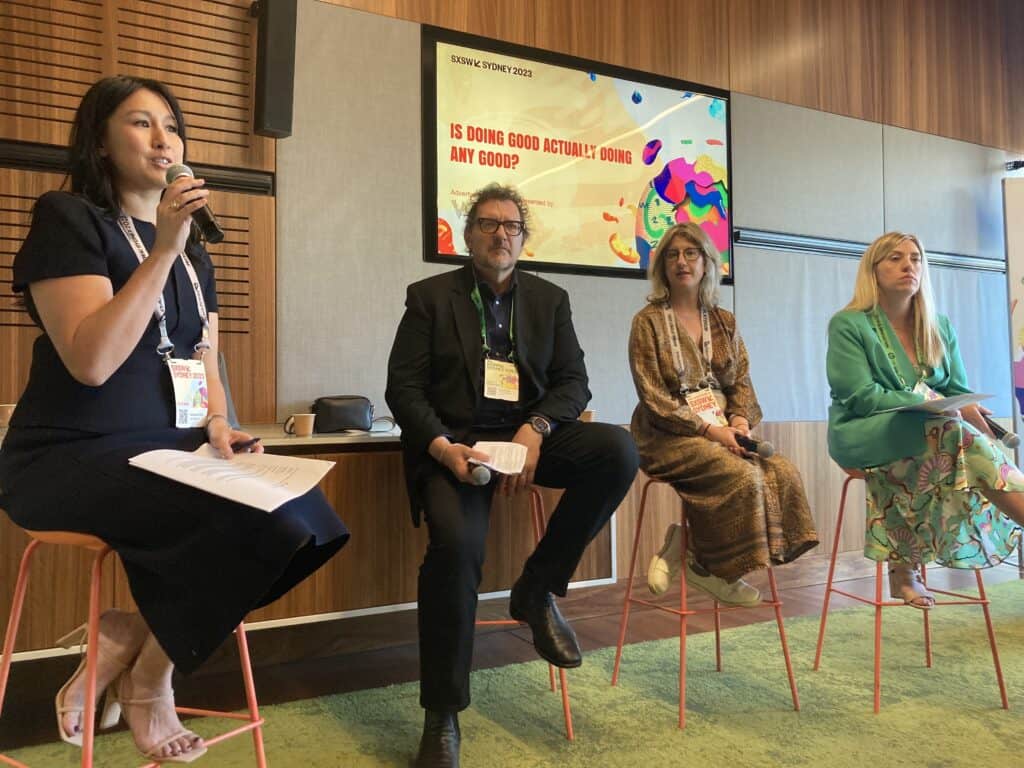
Catherine King, Carl Rhodes, Emily Millane and Skye Lambley
When observing the corporate morality of companies, the message behind the motives and how consumers engage with them, Rhodes said: “You’ve got to kind of look at different businesses in different ways. But at the same time, no business is taking a good cause that harms their profits. That’s not really a thing at all.
“That’s the basic outline of corporate morality. We won’t do anything that harms profits. So, it’s always to be taken with a pinch of salt.
“Sometimes, it can be very explosive. Sometimes, I would say more authentic, like in Patagonia’s case. But always something worth questioning before you hand over your money or take that job,” Rhodes added.
USA House
By Tess Connery
Taking over Pump House bar, USA House brought the best of America down under.
With a giant colouring in that punters could contribute to outside the building, and a New Orleans-inspired jazz band entertaining crowds, USA House brought food, cocktails, and good times to Darling Harbour. There was even a cowboy hat giveaway, which led to the area around Pump House looking like you’d just stepped straight into Texas.
WPP House
By Tess Connery
Underneath the Powerhouse Museum, the entrance to WPP House can be found by following the purple. Inside there is a networking space – and coffee! – with a number of activations for punters to interact with.
For those visiting the House for any sessions, they will find a room full of headphones – pop them on to be able to hear the session taking place.
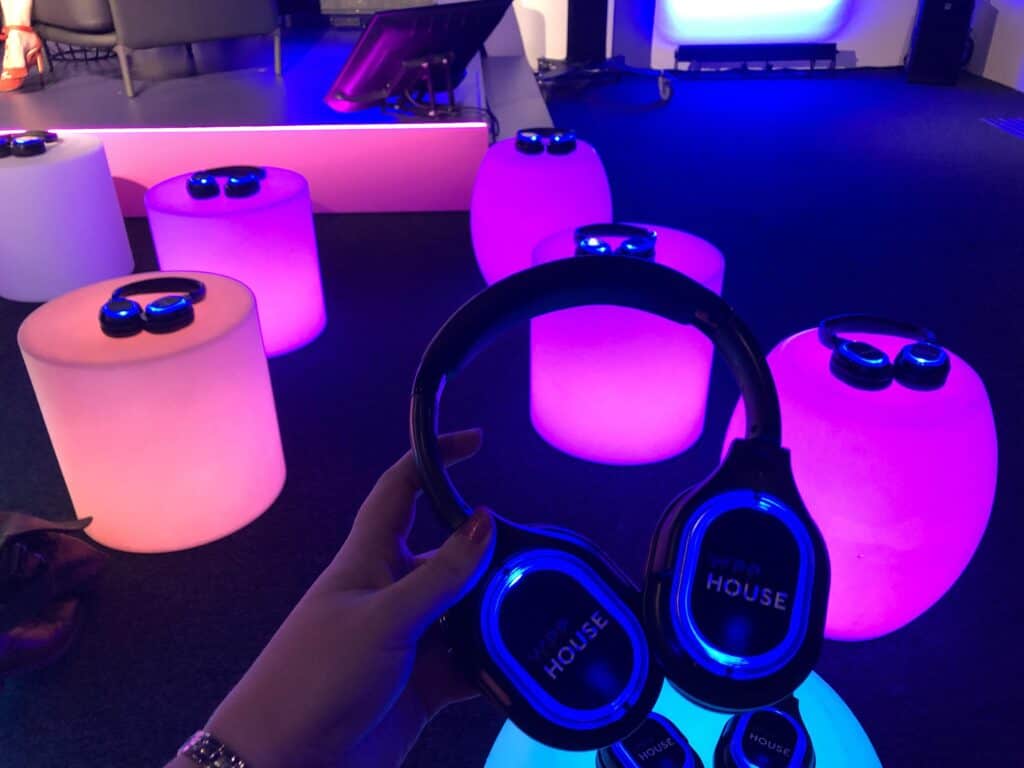
The reason for the headphones is that the Powerhouse has still been a working museum all through SXSW Sydney, and is full of visitors and school groups making the trip.
To avoid disturbing the public as they go about their day, WPP House has made sure to keep the sound levels as quiet as possible. When not being used for a session, the headphones make a great opportunity for a silent disco.

